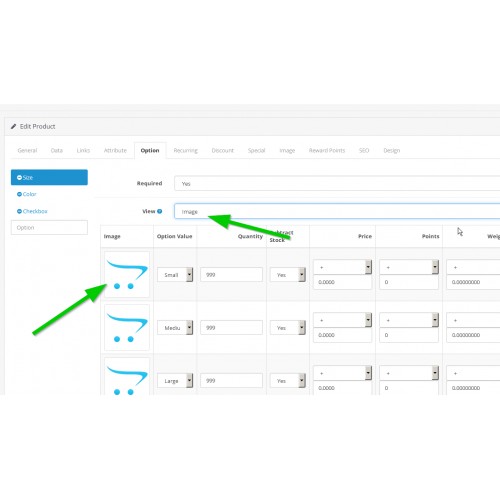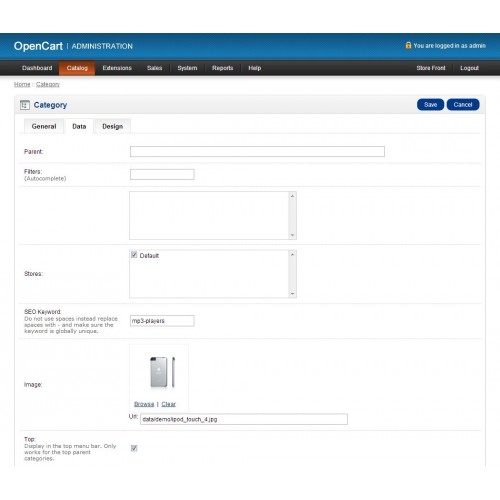


The x value is time which can be hours, days, or months depending on the range selected. They are Total Orders, Total sales, Total Customers and People Online which help you to easier to know the analytics.Ī world map to show where the orders from your website were coming from.Ī graph is provided to track the chronological progress of the store relative to the amount of orders and customers over time. There are four chart showing the status of your website. There are 3 sections of the dashboard that can help you understand the statistical data collected by your store: The main function of the dashboard is to give the shop owner an overview of how the shop is performing. The dashboard is the first thing you will see when entering OpenCart's admin. When you first login to your shop, the dashboard will be blank (as seen below), because there isn't any statistical data to be analyzed yet.Įntering the administration through the Dashboard This information can now be used to fill in the administrator login details.Īfter filling in the correct username and password, pressing the "Login" button will direct you to the OpenCart dashboard.
#OPENCART GET FILE PATH PASSWORD#
The config.php file needs to be edited to indicate the correct file path and location.Ī username and password is created in Step 3 of the auto-installer during installation.

For example, if the name of the admin folder is changed to admin1, the new location of the admin panel is at "Changing the name of the admin folder to another name is important for improving an online shop's security. If the name of the folder is changed by you during installation, the location of the admin panel is changed to that new name. For example, if your store is located at "your admin panel is located at "Even if the store is located in a sub-folder or on a sub-domain of their site, adding "/admin" to the end of the store's path will lead you to the administration side. To access the admin panel, type in location of the store into the web browser followed by "/admin". Customization in the admin affects how the customer will interact with a store: by modifying the look, structure, and content of the store front. OpenCart's administration side of the store is where you can modify features, upload images, add products, keep track of customers, manage payments, and much more. For the helloworld.php language file, the following variables contain the possible text fields what we require to display in our module: 1.Admin Interface Connecting the OpenCart administration Īs discussed in our previous articles, the language file contains the static text what should be displayed in our view file. Create a View to Admin Path: admin/view/template/module/helloworld.tpl.Create a Language File to Admin Path: admin/language/english/module/helloworld.php.Create an Controller to Admin Path: admin/controller/module/helloworld.php .As such, we'll try to leverage those when possible when working on our own. Note that OpenCart has a number of pre-build modules. This will take input from the dashboard and display it on the front-end of the site. In order to get acclimated with OpenCart's module system, we can write the obligatory "Hello World" module. OpenCart modules and extensions on Envato Market Our First Module Or you can check out the wide range of OpenCart modules and extensions on Envato Market. OpenCart has its own Extension Market where a large number of extensions are already available. Modules allow us to introduce, remove, or modify functionality of the core application that's done in a compartmentalized and maintainable way. It's through modules that OpenCart gives us the ability to extend its functionality without having to edit the application's files.Īs with many other content management systems, it's generally considered to be a best practice to extend functionality of the core application through the provided APIs and OpenCart is no different. OpenCart modules are analogous to add-ons, plugins, or extensions in other content management systems. To take things a step further, we're going to look at creating a custom module for OpenCart. We did this in order to help gain a better understanding of the core application. In the previous articles, we examined the MVC architecture and created our first controller, model, and view in the OpenCart application.


 0 kommentar(er)
0 kommentar(er)
